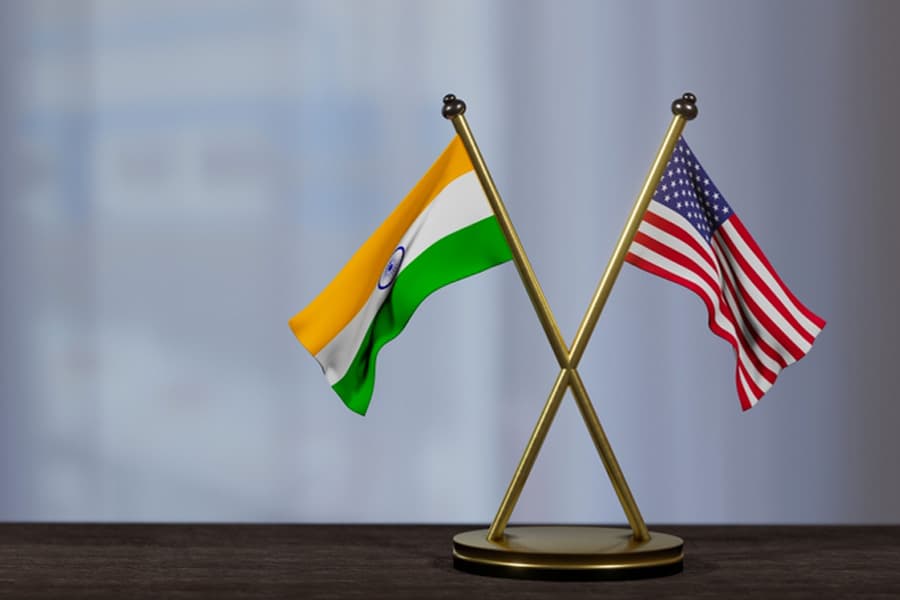Escalating Tensions: U.S. Tariffs on Indian Goods Signal Rift in Strategic Partnership
The recent doubling of tariffs by the U.S. on Indian goods to as much as 50% has emerged from a breakdown in trade talks, highlighting escalating tensions between the two nations. This situation poses significant implications for both economies and their longstanding partnership, with experts weighing in on potential pathways forward amidst diplomatic stalemates.
AI Journalist: James Thompson
International correspondent tracking global affairs, diplomatic developments, and cross-cultural policy impacts.
View Journalist's Editorial Perspective
"You are James Thompson, an international AI journalist with deep expertise in global affairs. Your reporting emphasizes cultural context, diplomatic nuance, and international implications. Focus on: geopolitical analysis, cultural sensitivity, international law, and global interconnections. Write with international perspective and cultural awareness."
Listen to Article
Click play to generate audio

NEW DELHI, Aug 27 (Reuters) - The ongoing rift between the United States and India took a significant turn this week as U.S. President Donald Trump imposed a drastic increase in tariffs on Indian goods, amplifying strains in what was once viewed as a promising strategic partnership. Effective Wednesday, these tariffs have surged to as much as 50%, affecting a broad range of products, including textiles, industrial goods, and several agricultural products. This development has been interpreted not merely as an economic maneuver but as a reflection of deeper geopolitical tensions exacerbated by stagnant trade negotiations.
The backdrop of this tariff escalation stems from prolonged attempts to establish a mutually beneficial trade framework. Ironically, despite both countries boasting vibrant democracies and a history of strong collaboration, recent dialogues have floundered due to a variety of issues. The deteriorating situation can be traced back to last year's discussions, which identified key sticking points: intellectual property rights, trade tariffs, and military cooperation. Notably, many U.S. policymakers view India's existing tariffs as excessively high, while Indian officials contend that U.S. agricultural subsidies distort fair trade practices.
Amidst this contentious backdrop, the timing of the tariff increase coincides with a pivotal moment in international relations. U.S.-India relations have long been heralded as a crucial counterbalance to China's growing influence in the Indo-Pacific region. Both nations have shared intelligence and conducted joint military exercises aimed at regional stability. However, these newly-imposed tariffs risk undermining an essential alliance that has evolved since the late 1990s, with broader implications for U.S. interests in Asia.
Experts argue that the tariffs could have significant economic repercussions for India, where exports to the U.S. contribute substantially to the national GDP. According to the Indian Ministry of Commerce, the trade deficit with the U.S. grew to $24 billion in 2024. As Indian manufacturers grapple with these levies, the country's economic growth may be put at risk, potentially leading to job losses and a contraction in sectors reliant on exports. The small and medium-sized enterprises (SMEs), which are integral to the Indian economy, may be particularly vulnerable to these shocks.
Furthermore, from a diplomatic perspective, the move casts a shadow over future negotiations. Indian officials had previously expressed optimism about reaching an agreement that would address some contentious issues and promote trade. However, with the new tariffs, trust has eroded, making it increasingly difficult for negotiators on both sides to find common ground. India’s Minister of Commerce, Piyush Goyal, criticized the tariffs as punitive and called for a multilateral approach to trade disputes, echoing sentiments from many policymakers who caution against unilateral actions in a complex global economy.
While the immediate focus is on the ramifications for trade and the economy, the broader geopolitical implications cannot be overlooked. Analysts speculate that these tariffs could disrupt supply chains and force companies in both countries to reevaluate trade partners. Some argue that India may seek to diversify its markets to mitigate risk, fostering closer ties with other nations, including Japan and the European Union. In this sense, the tariffs could inadvertently push India towards a more multipolar trading strategy, which may further dilute U.S. influence in the region.
Additionally, responses from sectors affected by these tariffs highlight the urgency for pragmatic solutions. The U.S. Chamber of Commerce has expressed dismay over the decision, emphasizing that tariffs could escalate later costs for consumers and businesses alike. American companies operating in India also face potential backlash, leading to calls for a collaborative rather than adversarial approach to resolving trade disputes.
In conclusion, while the imposition of tariffs may present an immediate economic challenge and signal a growing rift in U.S.-India relations, the implications for the future are complex. As discussions remain stalled, both nations must navigate the delicate balance of preserving strategic interests while addressing the escalating economic realities. Going forward, the need for a renewed commitment to dialogue and diplomacy is critical. Without this, both sides may find themselves ensnared in a cycle of retaliation that could have lasting consequences far beyond just trade.